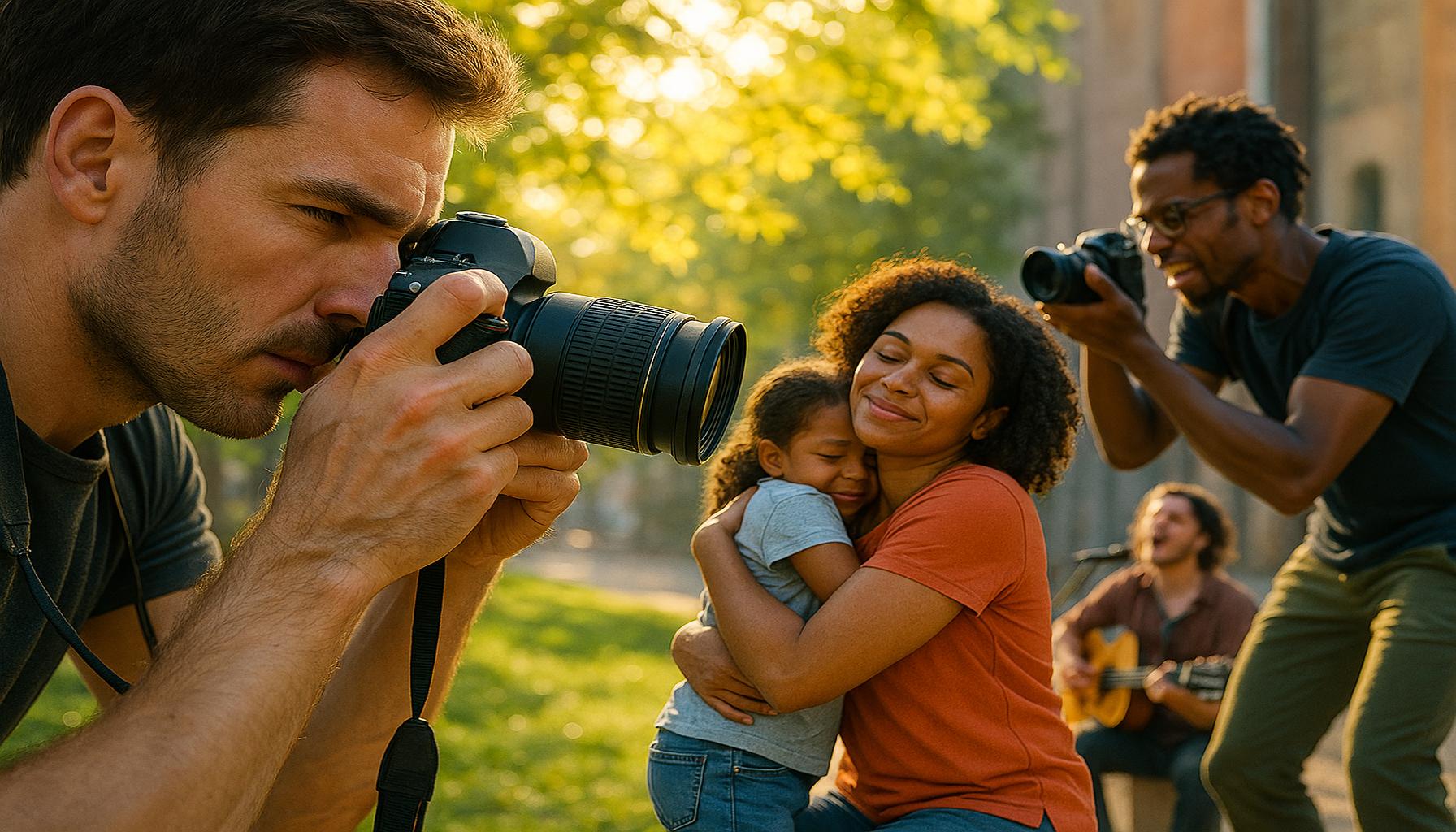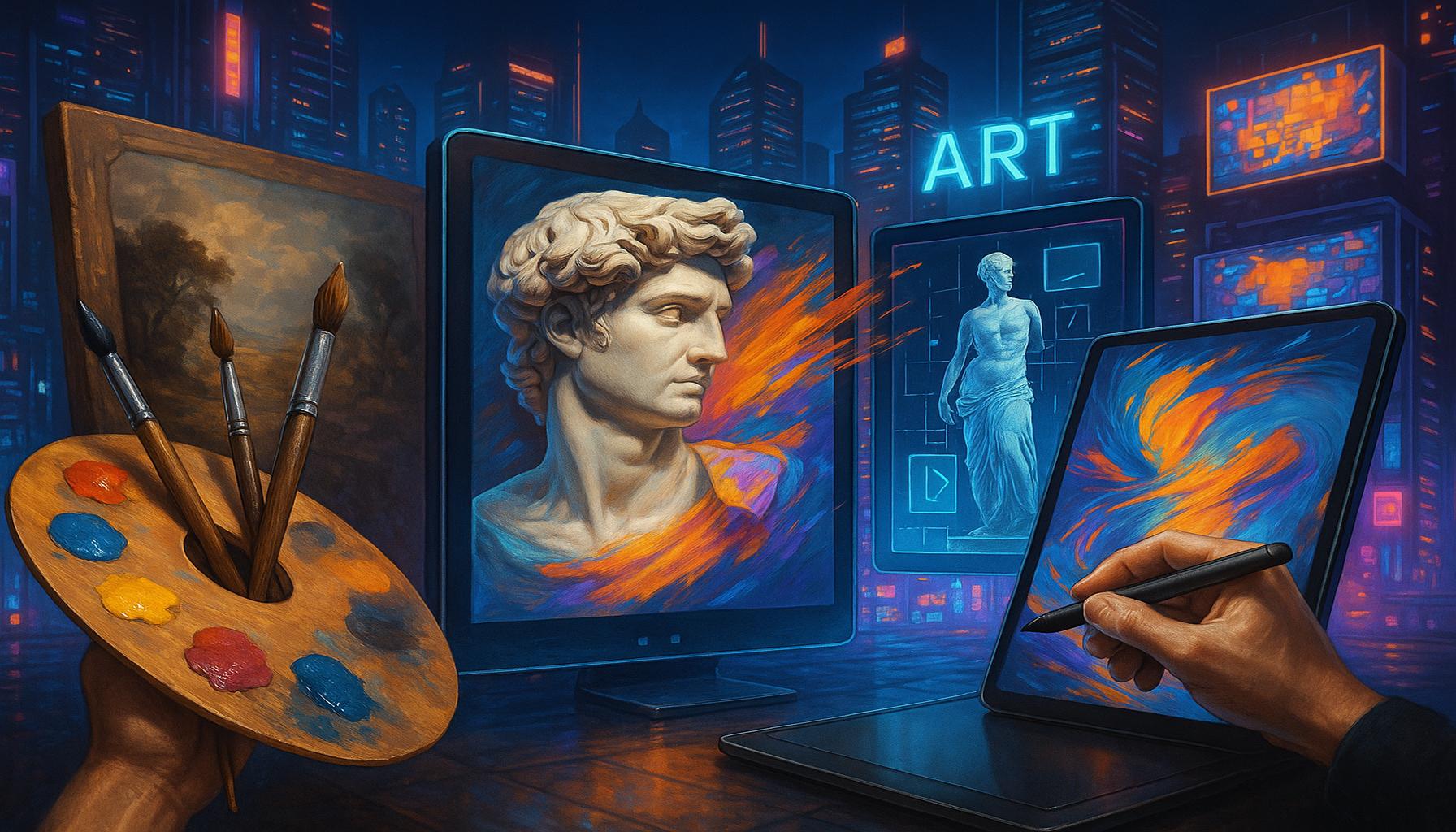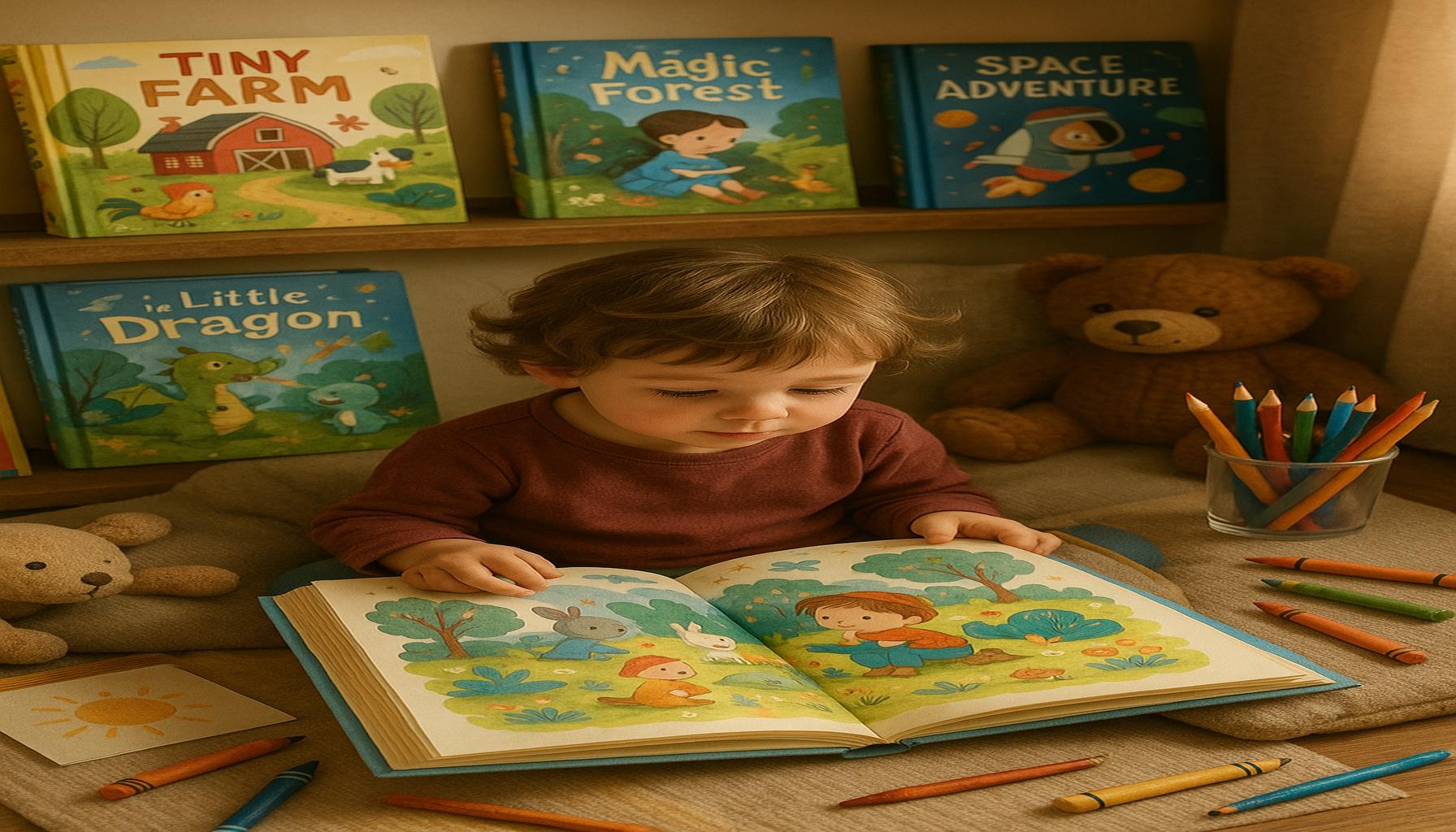Photography as a Form of Art: Capturing Emotions and Stories

The Role of Photography in Capturing Human Experience
Photography is more than just a medium; it is a powerful tool that encapsulates human emotions and conveys stories. Each snapshot can freeze a moment in time, allowing us to explore feelings that words often fail to express. Through the lens, artists translate the world around them into visual narratives that resonate across cultures and experiences.
Consider the diverse ways photography communicates:
- Portraits: Portrait photography uniquely captures the essence and spirit of individuals. For example, an intimate photo of a child laughing or an elderly person lost in thought can evoke a profound connection and allow viewers to experience joy, nostalgia, or empathy. Masters like Annie Leibovitz have showcased the power of portraiture through their ability to reveal personal stories within a singular frame.
- Documentary: This form of photography tells significant cultural or social stories, often shedding light on pressing issues. Think of photojournalists like Dorothea Lange, whose images from the Great Depression provide an enduring insight into human resilience and hardship. By documenting real-life events and conditions, photographers can provoke thoughts and inspire change.
- Landscape: Landscape photography goes beyond simply capturing nature; it evokes feelings of awe and connection to the environment. An image of the sun setting over the Grand Canyon can invoke a sense of tranquility and appreciation for the natural world. Photographers such as Ansel Adams have shaped how we view and value these landscapes, often advocating for conservation through their breathtaking visuals.
- Abstract: Abstract photography challenges perceptions and stimulates thought. Images that focus on colors, patterns, and shapes without clear subjects can encourage viewers to interpret art personally. Renowned photographers, like Andreas Gursky, use abstract forms to explore the complexities of modern life and human experience, prompting deeper contemplation.
In the age of technology and social media, the importance of photography has only increased. It serves as a bridge between personal experiences and shared realities. On platforms like Instagram and Pinterest, users share their lives visually, creating a tapestry of human experiences that spans continents. Photos of everyday moments become powerful connections that transcend language, culture, and geography.
Each click becomes an invitation for us to engage in a visual conversation, urging us to reflect on our feelings and the broader human experience. When we view a photograph, we not only observe an image; we partake in the emotions conveyed by the photographer and their subject. The purpose of photography stretches beyond mere documentation—it is a means to express individuality and communicate shared humanity.
As we delve deeper into the world of photography, we will uncover the intricate relationship between artistic vision and the emotional resonance that captivates audiences. Photography can transform ordinary moments into powerful conversations, revealing the heart and soul behind the frames. Join us on this journey to discover how photographs not only depict moments but portray the authentic connections that define our existence.

DIVE DEEPER: Click here to discover sustainable crafting techniques
Exploring Artistic Elements in Photography
Photography, often referred to as the art of light, utilizes a unique interplay of elements that distinguish it from other art forms. The combination of composition, color, and lighting transforms simple images into profound expressions of emotion and narrative. Understanding these fundamentals allows both aspiring and seasoned photographers to harness the full potential of their craft, establishing a compelling visual dialogue.
At the heart of photography lies composition—the arrangement of elements within the frame. Effective composition directs the viewer’s attention and can significantly impact the emotional weight of an image. Consider the rule of thirds, a principle guiding photographers to position subjects along imagined lines to create balance and interest. This technique not only captivates the eye but also emphasizes the story behind the shot. Veteran photographers like Henri Cartier-Bresson have exemplified this principle through decisive moments that resonate with raw emotion and storytelling.
Moreover, the use of color in photography wields substantial power over how an image is perceived. Warm colors, such as reds and yellows, evoke feelings of warmth and passion, while cool colors, like blues and greens, often convey tranquility or melancholy. Through selective color palettes, photographers can manipulate the emotional experience evoked by an image. For instance, a photograph showcasing a vibrant sunset may inspire awe and hope, while a desaturated urban scene may elicit feelings of isolation. Artists like Gregory Crewdson utilize color strategically to enhance the narratives their photographs convey, drawing viewers into a deeper emotional connection with the art form.
Lighting stands as a crucial element in photography, affecting mood and perception. The time of day, the angle of light, and the quality of illumination can dramatically alter the feel of an image. Golden hour—shortly after sunrise or before sunset—provides soft, diffused light that beautifies portraits and landscapes alike, often intensifying emotions portrayed in those frames. Iconic photographers like Richard Avedon have adeptly mastered lighting techniques that illuminate subjects’ expressions, creating striking portraits that transcend mere representation.
While technical elements play vital roles in creating impactful images, the underlying intention—what the photographer wishes to convey—dictates much of the work’s emotional resonance. A single photograph can embody a myriad of narratives, shaped by the viewer’s background and experiences. The synergy between technical proficiency and subjective interpretation fosters a rich tapestry of meanings in photography, challenging viewers to reflect on their own emotions and stories.
As we unravel the relationship between technical skill and emotional impact within photography, it becomes evident that this art form reaches far beyond aesthetic appeal. It invites a shared experience, where every frame becomes an opportunity to explore the complex interplay of human feelings and the myriad stories waiting to be told through the lens. The journey through photography is one where personal perspectives and universal themes collide, allowing for a vibrant dialogue about life itself.
Understanding the Emotional Impact of Photography
Photography is much more than merely capturing light and shadow—it’s a visceral language of emotions and narratives. Through the lens, photographers create a bridge between reality and perception, often eliciting deep emotional responses. Consider how a single image can encapsulate joy, sorrow, or nostalgia, stirring memories or affecting one’s mood. The art of photography allows for a raw and unfiltered view of the world, often revealing stories untold. To further explore this concept, one must look at how photographers utilize composition, color palettes, and lighting to evoke specific feelings. A somber image may employ muted tones and dramatic shadows, drawing the viewer into its emotional landscape, while vibrant photographs might spark joy or excitement. Additionally, the practice of storytelling in photography is essential. Great photographers often take on the role of storytellers, capturing moments that reflect cultural narratives, personal journeys, or historical events. The images serve as a visual diary, providing insights into the human experience, making them relatable and profound. As we delve into various photographic styles, it’s crucial to recognize that each perspective contributes to a larger tapestry of understanding and empathy. Emerging photographers are constantly redefining boundaries and exploring the multilayered dimensions of storytelling through their art, inviting viewers to share in their narrative journeys. Engaging with photography as a form of artistic expression enhances our perception not only of captured moments but also the world around us, fostering a deeper connection to our collective human experience. As technology evolves, so too does the potential for photography to portray complex emotions and stories, urging those who wield the camera to boldly document the world’s beauty and heartache.
| Emotional Expression | Storytelling Techniques |
|---|---|
| Conveys deep feelings | Utilizes composition and lighting |
| Captures moments of joy and sorrow | Creates narratives through imagery |
DISCOVER MORE: Click here to dive deeper
The Role of Storytelling in Photography
At its core, photography transcends mere documentation; it serves as a potent medium for storytelling. Each photograph possesses the ability to capture a moment in time, providing a glimpse into the lives, emotions, and experiences of individuals or environments. This intrinsic narrative quality is what sets photography apart from other visual art forms, as it invites viewers to engage not just with the image, but with the story it tells.
Consider photojournalism, where impactful images convey powerful narratives of social issues, cultural moments, or human experiences. Photographers like Dorothea Lange famously captured the plight of displaced families during the Great Depression, transporting viewers into the harsh realities of their lives through evocative imagery. Such work demonstrates how photography can act as a catalyst for empathy; each frame can spark awareness and stimulate conversations about pressing social matters.
On the other hand, personal photography, such as portraiture or family snapshots, also encapsulates storytelling on an intimate level. A portrait does not merely represent a person, it reveals layers of personality, mood, and history that beckon the viewer to decipher the context behind the expression. Renowned portrait photographers like Annie Leibovitz have mastered this art by capturing subjects in a way that goes beyond surface appearance, often weaving narrative elements into the very fabric of the frame. In her iconic portraits of celebrities, she often encapsulates stories that resonate with viewers long after the moment has passed.
Beyond individual subjects, the idea of series photography further enriches the narrative potential of photographic art. Photographers often create themed series that explore a concept, a culture, or a personal exploration through multiple images. For instance, projects addressing themes of migration, identity, or the impact of climate change serve not merely as collections of beautiful images, but rather as profound commentaries on pressing global issues. The work of photographers like Sebastião Salgado, who documents the plight of impoverished communities, underscores the transformative power of a cohesive photographic narrative.
Additionally, the evolution of storytelling in photography has been bolstered by the rise of social media platforms. In an age where images can be shared instantly, photographers leverage platforms like Instagram to chronicle their photographic journeys, sharing not just single images but multifaceted narratives over time. Documenting personal experiences, travel adventures, or day-to-day moments enables both professional and amateur photographers to cultivate a narrative arc that engages their audience continually.
As we delve deeper into the role of storytelling in photography, it becomes clear that the intersection of technical skill and narrative insight serves as a hallmark of impactful photography. Each capture is not only a beautiful representation of reality but also a thread in a larger tapestry that connects the viewer to the subject on a deeper level. The stories embedded in photographs allow us to process complex emotions, embrace shared experiences, and connect with the world around us.
Through the lens of photography, we are invited to witness life’s vivid narratives unfold, sparking curiosity and reflection. Each image tells a unique story, offering a chance for dialogue and understanding in a visually driven world.
DIVE DEEPER: Click here to discover the evolution of digital art
Conclusion
In conclusion, photography stands as a distinctive art form that captures not just the visual aesthetics of our world but also the intricate emotions and stories woven into the very fabric of existence. From the evocative narratives of photojournalism that shed light on critical social issues to the poignant portraits that reveal glimpses into our shared humanity, each photograph serves as a bridge connecting the viewer to the deeper experiences of life.
As the realm of photography continues to evolve, particularly with the integration of social media and digital platforms, we are witnessing an unprecedented democratization of storytelling. Every individual now has the capacity to express their unique narrative through images, fostering a rich tapestry of voices that can resonate globally. This accessibility not only enhances the diversity of stories told but also stimulates a greater understanding among cultures and communities.
Ultimately, photography invites us to reflect on our perceptions and emotional responses to the moments captured. It encourages a dialogue that goes beyond the surface, prompting us to consider how each image embodies a myriad of emotions, histories, and connections. As we appreciate photography as a powerful art form, let us also recognize its incredible potential to inspire change, foster empathy, and enrich our collective narrative. Each click of the shutter becomes not just a moment frozen in time, but a chapter in the ongoing story of humanity.



